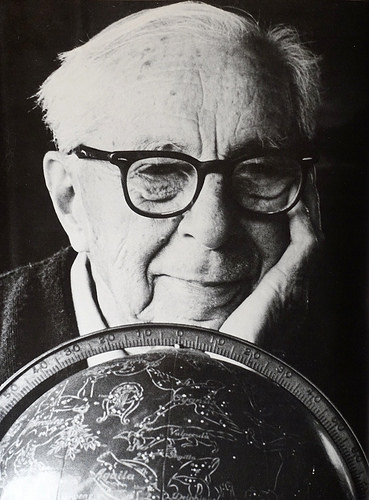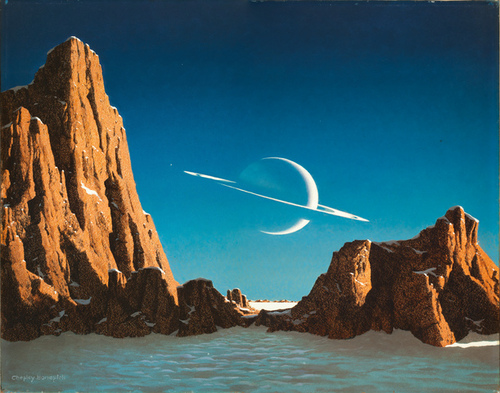“I have no doubt that Chesley Bonestell, with its wonderfully accurate representations of places to explore and instruments of the space age, has helped us create the scenario for what was certainly to come.
Without Bonestell and his works of art, the era of NASA could have been delayed for many years, or may not yet have occurred. “
Joseph Chamberlain, Director of Adler Planetarium
 Chesley Knight Bonestell, Jr. (January 1, 1888 – June 11, 1986) was an American painter, designer and illustrator. His paintings were a major influence on science fiction art and illustration, and he helped inspire the American space program.
Chesley Knight Bonestell, Jr. (January 1, 1888 – June 11, 1986) was an American painter, designer and illustrator. His paintings were a major influence on science fiction art and illustration, and he helped inspire the American space program.
An early pioneering creator of astronomical art, along with the French astronomer-artist Lucien Rudaux, Bonestell was dubbed the “Father of ModernSpace Art”.
Bonestell realized that he could combine what he had learned about camera angles, miniature modeling, and painting techniques with his lifelong interest in astronomy. The result was a series of paintings of Saturn as seen from several of its moons that was published in Life in 1944. Nothing like these had ever been seen before: they looked as though photographers had been sent into space. His painting of Saturn seen from the frosty moon Titan is perhaps the most famous astronomical landscape ever. It was constructed with a combination of clay models, photographic tricks and various painting techniques.
Bonestell followed up the sensation these paintings created by publishing more paintings in many leading national magazines. These and others were eventually collected in the best-selling book The Conquest of Space (1949), produced in collaboration with author Willy Ley. Bonestell’s last work in Hollywood was contributing special effects art and technical advice to the seminal science fiction films produced by George Pal, includingDestination Moon, When Worlds Collide, The War of the Worlds and Conquest of Space, as well as Cat-Women of the Moon. Beginning with the October 1947 issue of Astounding Science Fiction, Bonestell painted more than 60 cover illustrations for science fiction magazines, primarily The Magazine of Fantasy & Science Fiction, in the 1950s through 1970s. He also illustrated many book covers.
When Wernher von Braun organized a space flight symposium for Collier’s, he invited Bonestell to illustrate his concepts for the future of spaceflight. For the first time, spaceflight was shown to be a matter of the near future.
During his lifetime, Bonestell was honored internationally for the contributions he made to the birth of modern astronautics, from a bronze medal awarded by the British Interplanetary Society.

One of most inspirational paintings by Chelsey Bonestell: an ethereally beautiful image of Saturn seen from its giant moon Titan, has been called “the painting that launched a thousand careers.”
